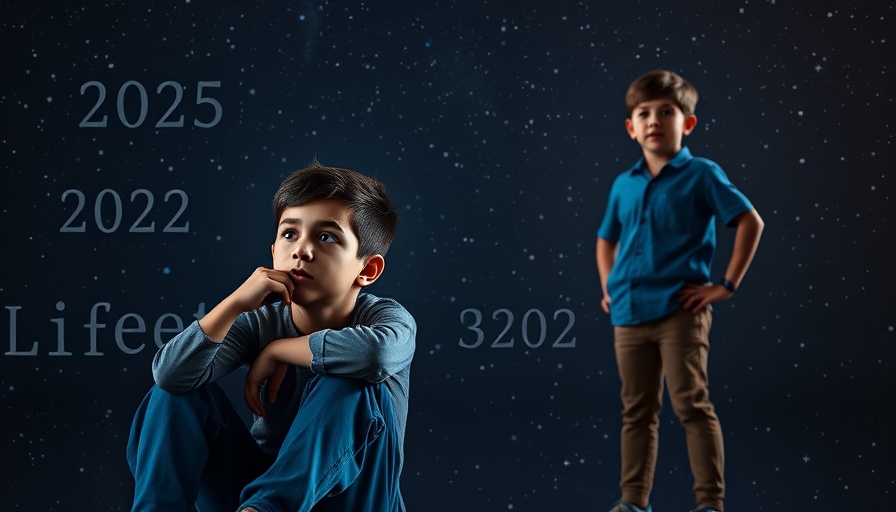
Understanding the Unique Qualities of Neurodiverse Children
As we explore the complexities surrounding the differences between autistic and neurotypical children, it becomes crucial to acknowledge that autism itself is not a lesser state of being. It is essential to move past misconceptions and understand it as part of a wide spectrum of neurodiversity. In fact, every child's journey is unique, with autistic children often possessing remarkable talents and skills that shine through their individual experiences.
In the video 'What’s the Difference Between an Autistic Child and a Neurotypical Child?', the discussion dives into the unique characteristics of neurodiverse children, which sparked deeper analysis on our end.
Milestones and Development: A Comparison
Developmental milestones provide a clear lens through which to compare neurotypical and neurodiverse children. Neurotypical children generally exhibit a predictable pattern of developmental achievements within specific time frames. For instance, they may walk by 10-13 months or form basic sentences around 18 months. Meanwhile, children in the autistic spectrum might experience slight delays in their milestones, particularly in language acquisition.
It’s crucial to stress that these delays don't define the child’s potential. A spectrum approach allows us to appreciate the “human variation” that exists. For instance, some autistic children may take longer to reach these milestones but could demonstrate extraordinary abilities in other areas that neurotypical children might not exhibit. The unique brain wiring in autistic individuals often leads to heightened strengths in creativity, detail orientation, and honesty.
Social Interactions: Understanding Differences
Social skills, including the ability to interact and communicate with peers, can pose challenges for autistic children. They might struggle with understanding social cues that neurotypical children intuitively grasp. A neurotypical child may engage in friendships through playful banter and shared interests, while an autistic child might retreat or avoid social situations due to feeling overwhelmed.
This dynamic is often misconstrued as a lack of interest in others when, in reality, many autistic children desire social connection but may lack the confidence or skills to pursue it. Parents and caregivers can play a vital role in bridging this gap by providing opportunities for guided social interaction and gradual exposure to group settings.
The Strengths of Neurodivergence
Despite the challenges, autistic individuals possess unique capabilities. Neurodivergent children can exhibit unparalleled focus on topics that interest them, often making creative and insightful contributions in their particular fields of fascination. For instance, a child might develop intricate models of their favorite city or display advanced problem-solving abilities long beyond their years.
Research has shown that traits associated with autism, like heightened sensory awareness and deep concentration, can lead to innovative thinking and exceptional talents in areas such as art, science, and technology. In a society that increasingly values creativity and out-of-the-box thinking, these characteristics should be viewed as strengths rather than deficits.
Combating Misconceptions About Autism
It’s crucial to dismantle myths surrounding autism and neurodiversity to foster a more inclusive environment. Many people mistakenly believe that autism is synonymous with intellectual disability, but this is far from the truth. Autistic individuals can be found across the entire intellectual spectrum, showcasing a diverse range of skills, talents, and intelligence levels.
Furthermore, the notion that all autistic children are the same only perpetuates harmful stereotypes. Autism manifests differently in each child, influenced by their environment, experiences, and personal interests. Promoting awareness can help dismantle stigma and encourage a culture of acceptance and understanding.
Practical Tips for Supporting Neurodiverse Children
As educators and parents, understanding how to support neurodiverse children can make a considerable difference in their development. Here are some practical strategies to keep in mind:
- Create Structured Environments: Establish routines that help children feel secure. Predictability can be comforting to neurodiverse children.
- Encourage Communication: Use visuals, gestures, or assistive technology to help children express themselves.
- Promote Interests: Encourage children to delve into their passions. Supporting their interests can provide motivation and confidence.
- Provide Social Opportunities: Facilitate playdates or group activities that allow for social development in a supportive setting.
- Foster Emotional Awareness: Teach children about emotions and help them articulate their feelings through art, storytelling, or play.
Conclusion: Embracing Neurodiversity
In conclusion, understanding the differences between autistic and neurotypical children is about embracing a spectrum of human experience that values each individual’s unique contributions. Instead of focusing solely on developmental delays, we need to celebrate the extraordinary potentials that autistic children can exhibit.
As we nurture their strengths, we create a richer, more diverse community where all children can thrive. If you resonate with these insights, consider exploring further how you can positively impact our understanding of autism and neurodiversity in your community.
 Add Row
Add Row 

 Add
Add 


Write A Comment